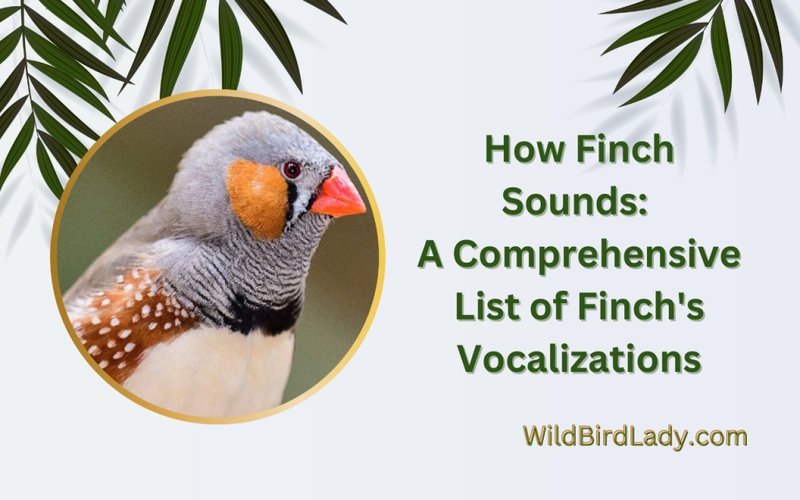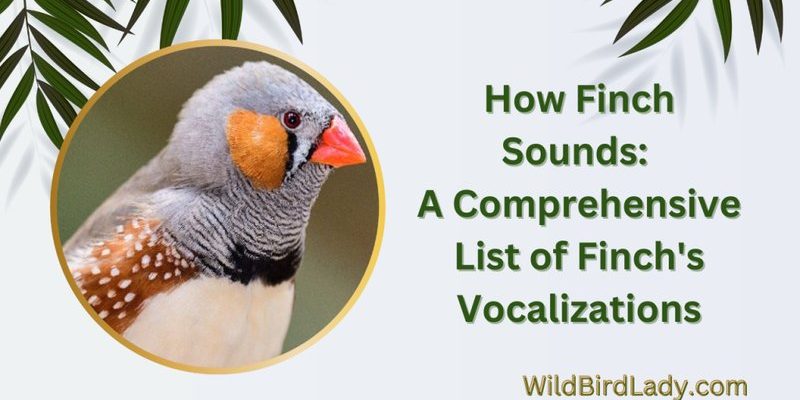
Think of finch vocalizations as a unique language, rich with meaning. When you hear a lively chirp, it might signal a happy moment, while a sharp call could mean danger is near. In this guide, we’ll dive into the fascinating world of finch sounds and explore what they’re trying to tell us. Whether you’re a seasoned birdwatcher or just curious about these fluttering friends, there’s plenty to discover.
The Basics of Finch Vocalizations
Finch vocalizations are a complex mix of calls, songs, and alarms. Each sound serves a specific purpose, and understanding them adds to our knowledge about their behavior. Generally, you’ll notice two main categories of sounds: calls and songs.
Calls are short and sharp, used for quick communication. They’re often heard in everyday interactions between birds. For example, a simple chip might mean “Hey, I’m here!” or “Watch out!” It’s their way of staying connected with their flock.
On the other hand, songs are longer and more melodic. Males often sing during mating season to attract females or establish territory. Think of it as their version of a romantic serenade. The beauty of a finch’s song can vary between species, but it usually carries a soothing quality that’s hard to resist.
Common Finch Vocalizations
Now, let’s break down some common vocalizations you might encounter with finches.
- Chirps: These are the most common sounds, quick and repetitive. They can signify a range of emotions, from excitement to caution. If you hear a bunch of chirping, the finches might be chatting about food or keeping in touch with their friends.
- Trills: A series of rapid notes, trills are often used during courtship. When you hear a male finch trilling, he’s likely trying to impress a female.
- Cheeps: These short, high-pitched sounds might indicate distress or annoyance. If you see a finch cheeping, it could be sharing a warning about a predator nearby.
- Whistles: Some finches have beautiful whistling calls that can be quite melodic. These are often associated with longer conversations, perhaps between mates or friends.
Understanding these sounds can help you recognize what your feathered friends are talking about and give you a fuller picture of their daily lives.
The Role of Finch Vocalizations in Social Behavior
Finch vocalizations play a vital role in their social interactions. Just like we use tone and volume to convey how we feel, finches adjust their calls and songs based on context. For example, during breeding season, you might notice males calling more often. They’re trying to attract females while also asserting dominance over their territory.
Interestingly, finches also use vocalizations to build social bonds. Whether it’s a parent calling to its chicks or a pair of mates communicating, these sounds help maintain relationships within the flock. You might even observe different species of finches harmonizing together, creating a beautiful intertwining of sounds that adds to the vibrancy of their habitat.
Here’s the thing: birds are smart! They often respond to each other’s calls, creating a lively dialogue amongst themselves. This back-and-forth communication is crucial for their survival, allowing them to share information about food sources, potential threats, and much more. It’s a constant dance of sound, and learning to recognize their vocalizations can enhance your appreciation for their intelligence.
How Environment Influences Finch Sounds
Just like humans adapt their speech based on their surroundings, finches adjust their vocalizations to fit different environments. For example, a finch singing in an open field might have a louder, clearer song to carry over longer distances. Conversely, in dense foliage, their calls might be softer and more subdued to avoid drawing attention to predators.
The time of day also affects their vocal patterns. Many finches are most vocal during the early morning and late afternoon, often called the “dawn chorus.” This is the time when they’re most active and likely to be communicating their presence or attracting mates. You might find it fascinating how the arrival of spring triggers increased singing, signaling a time for mating and nesting.
Additionally, urban environments can alter the way finches communicate. In noisy cities, they may adapt their songs to be louder or change pitch so they can still be heard above the din of traffic and construction. This showcases their remarkable ability to adapt to changing conditions—a lesson for all of us, really!
Why Understanding Finch Vocalizations Matters
So, why should you care about what finches are saying? Understanding their vocalizations can give you insight into their behavior, health, and well-being. If you notice a sudden change in their calls—like increased alarm calls—this could indicate stress or danger in their environment. It’s not just a matter of curiosity; it’s about being an informed observer and contributor to their well-being.
Moreover, if you’re trying to attract finches to your yard, knowing their sounds can help you create a more inviting space. By providing the right food and shelter, you can enhance their habitat, allowing you to enjoy their beautiful songs more often.
Listening to finches can also be a calming experience. Many people find birdwatching and listening to their songs to be a great way to relax and connect with nature. In a world that often feels chaotic, taking the time to appreciate these little creatures can be a breath of fresh air.
Tips for Identifying Finch Vocalizations
If you’re eager to start recognizing finch vocalizations, here are some tips to help you along the way:
- Spend time outdoors: The best way to familiarize yourself with finch sounds is to listen to them. Grab a comfy chair, sit outside, and just pay attention to their chatter.
- Use bird apps: There are fantastic apps and websites that provide audio clips of various bird calls, including finches. Listening to recordings can help you match sounds with visuals.
- Observe behavior: Pay attention to what the finches are doing when they make specific sounds. Are they flying, foraging, or interacting with other birds? This context can help you understand their vocalizations better.
- Keep a journal: Document your observations! Write down what you hear and see. This can be a rewarding way to track your learning progress and your evolving relationship with these birds.
Becoming attuned to finch vocalizations takes time and patience, but it’s a rewarding endeavor that can deepen your connection to nature.
Finch vocalizations are a beautiful and intricate part of their lives, adding layers to their social interactions and environments. By tuning in to their calls and songs, you not only enhance your understanding but also enrich your experience as a wildlife observer. Each chirp, trill, and whistle carries its own story, waiting for you to decode it.
So next time you hear a finch singing in your garden or nearby park, take a moment to listen. Try to connect the sounds to their behaviors and surroundings. Who knows? You might just start to understand the ways of these delightful little birds on a whole new level. Happy birdwatching!

